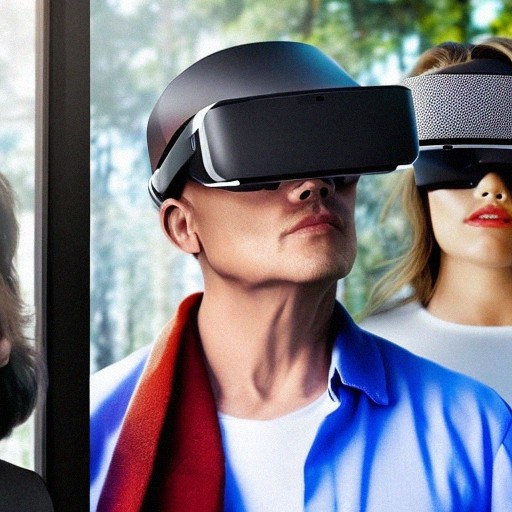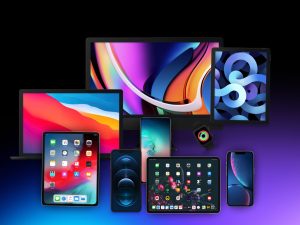Augmented Reality (AR) and Virtual Reality (VR) devices, such as Microsoft Hololens and Quest Pro, rely on a tracking system to provide an immersive experience to the users. The tracking system is responsible for determining the position and orientation of the device in real time, allowing virtual elements to interact with the real world.
There are two main types of tracking systems used in AR/VR devices: inside-out tracking and outside-in tracking. Inside-out tracking is a method where the AR/VR device has the necessary sensors and cameras to determine its own position and orientation without needing external cameras or sensors. On the other hand, outside-in tracking uses external cameras or sensors to determine the device’s position and orientation.
Simultaneous Localization and Mapping
One of the most popular inside-out tracking systems is called SLAM (Simultaneous Localization and Mapping), which uses a combination of cameras, microphones, and other sensors to build a map of the environment and track the device’s position within it. This system works by analyzing the image data captured by the device’s cameras and comparing it to the map of the environment to determine its position and orientation.
Six Degrees of Freedom
Another popular inside-out tracking method is known as 6DoF (Six Degrees of Freedom), which tracks the device’s position and orientation in three-dimensional space. This system uses sensors such as accelerometers, gyroscopes, and magnetometers to determine the device’s orientation and cameras to determine its position.
On the other hand, outside-in tracking systems use external cameras or sensors to determine the device’s position and orientation. One such system is known as lighthouse tracking, which uses laser-based sensors to track the device’s position. This system works by emitting laser signals from the sensors and detecting the reflections from the device, allowing the system to determine its position and orientation.
Optical tracking
Another popular outside-in tracking system is called optical tracking, which uses cameras to track the device’s position. This system works by analyzing the images captured by the cameras and comparing them to a reference image to determine the device’s position and orientation.
Regarding accuracy, both inside-out and outside-in tracking systems have their strengths and weaknesses. Inside-out tracking systems, such as SLAM and 6DoF, are typically more accurate and less prone to error because they have all the necessary sensors and cameras on the device itself. However, they can be more susceptible to errors in cluttered environments, where it is difficult for the device to detect and map the environment accurately.
Outside-in tracking systems, such as lighthouse and optical tracking, are typically less accurate than inside-out systems, but they can be more reliable in cluttered environments because they do not rely on the device’s sensors and cameras. However, they can be more prone to errors if the external cameras or sensors are not correctly positioned or if there is a delay in the tracking data.
In terms of speed, inside-out tracking systems are typically faster than outside-in systems because they do not rely on external cameras or sensors. However, outside-in systems can be faster in some scenarios, such as when the device is moving quickly because the external cameras and sensors can provide more data to the system.
In terms of implementation, inside-out tracking systems are typically more complex to implement than outside-in systems because they require more sensors and cameras on the device. On the other hand, outside-in systems are typically easier to implement because they only require external cameras or sensors.
Microsoft Hololens and Quest Pro have made significant advancements in their tracking systems in recent years, offering users a more immersive and seamless AR/VR experience. Microsoft Hololens uses a combination of inside-out tracking (SLAM and 6DoF) and outside-in tracking (lighthouse) to provide accurate and fast tracking in various environments. Meanwhile, Quest Pro combines inside-out tracking (6DoF) and optical tracking to provide an immersive VR experience.
In terms of future developments, it is expected that tracking systems will continue to improve, providing even more accurate and reliable tracking in AR/VR devices. There is also a growing trend towards hybrid tracking systems that combine inside-out and outside-in tracking advantages, providing users with the best of both worlds.
Here are some helpful links for further reading on the topic of tracking systems in AR/VR devices:
- https://mazerspace.com/vr-tracking-what-it-is-and-how-it-works/
- https://www.wareable.com/vr/inside-out-vs-outside-in-vr-tracking-343
- https://www.mechatech.co.uk/journal/how-do-common-virtual-reality-tracking-systems-work
- https://xinreality.com/wiki/Inside-out_tracking#:~:text=Inside%2Dout%20tracking%20is%20a,HMDs)%20and%20motion%20controller%20accessories.
Tracking systems are crucial in providing an immersive and seamless AR/VR experience. As technology continues to evolve, it is expected that tracking systems will continue to improve, offering even more accurate and reliable tracking in AR/VR devices.




